An area rich in history is to be honoured when a new housing development is named by Halton Borough Council. – But officers need your help to find out more about the origin of the name.
Later this year, Russell Homes is set to start work on a new residential development on a derelict piece of wasteland at the bottom of Page Lane, on Warrington Road, Widnes, near what was known as Marrabone.
This is an area steeped in the town’s industrial past and continues the areas ongoing renaissance from mainly commercial occupation into a vibrant residential area once again.
During the mid-19th century, the farmlands and rural aspect on the banks of the River Mersey underwent a radical transformation and the town of Widnes, as we know it today, began to emerge.
John Hutchinson opened his first Alkali factory on Spike Island and, to meet the heavy demand for labour, large influxes of Irish workers descended into Widnes. Newtown, Lugsdale and Moss Bank took the highest numbers of settlers and developed rapidly, so much so that the area around Newtown was known locally as ‘Little Ireland’.
In about 1867 the Moss Bank district came into being. Houses and factories intermingled haphazardly with pubs and industrial refuse dumps. With no formal planning, streets emerged quickly where they were most needed.
The houses were small, back to back properties packed together, densely populated and with poor sanitation. Indeed it was the industrialist and factory owner John Hutchinson who provided the town with its first piped water supply.
In 1873 The Adelphi Hotel was constructed on land at Warrington Road at the foot of Page Lane. New housing for factory workers on Grove Street and Bedford Street was nearing completion in an area known as ‘Marrabone’ which was, in a sense, a gateway to Moss Bank.
The area broadly covered land between Moss Bank and Lugsdale though exact information on this is scant.
The pub was, for many years, referred to as ‘Irelands’ due to the large Irish community who frequented it and later ‘Planties’ after the popular landlord John Plant who took it over in 1945.
Marrabone had a rich history and a great sense of community. It even had its own Amateur Rugby League team ‘The Marrabone Shamrocks’ which competed in the Widnes & District Amateur Rugby League after the Second World War.
Marrabone and its neighbouring district Moss Bank, were legendary for their carnivals and street celebrations.
It is believed the word Marrabone was derived from the word Marlybone.
In recent years parts of this former community have already been brought back onto the landscape with the reintroduction of Lea Street, Ellis Street and Pleasant Street on the site of their former locations.
Today the Warrington Road site is derelict, overgrown and untidy with no evidence of the thriving community which once lived and worked there. The last remaining evidence of this community is Walmsley Street which now serves only as an access road to a service yard on the east of the site.
With planning permission granted for a small residential development the street names have been chosen to reflect the history with Bedford Street and Grove Street, the roads that originally occupied this site, being revived.
Additional names being used are Adelphi Grove, which marks the history of the former public house and Marrabone Street, which pays homage to the areas name.
Halton Borough Council’s Executive Board Member for Transportation, Cllr Stan Hill, said: “When the newest residents take possession of their homes in 2019 a small yet significant chapter of Widnes’s Industrial history will have returned and hopefully, with it, a strong sense of community. The development is due to begin construction in autumn 2018.
“If anyone has any information in regard to the name ‘Marrabone’ then we would like to hear from you… “
Anyone with more information can call Iain Dignall on Iain.dignall@halton.gov.uk

